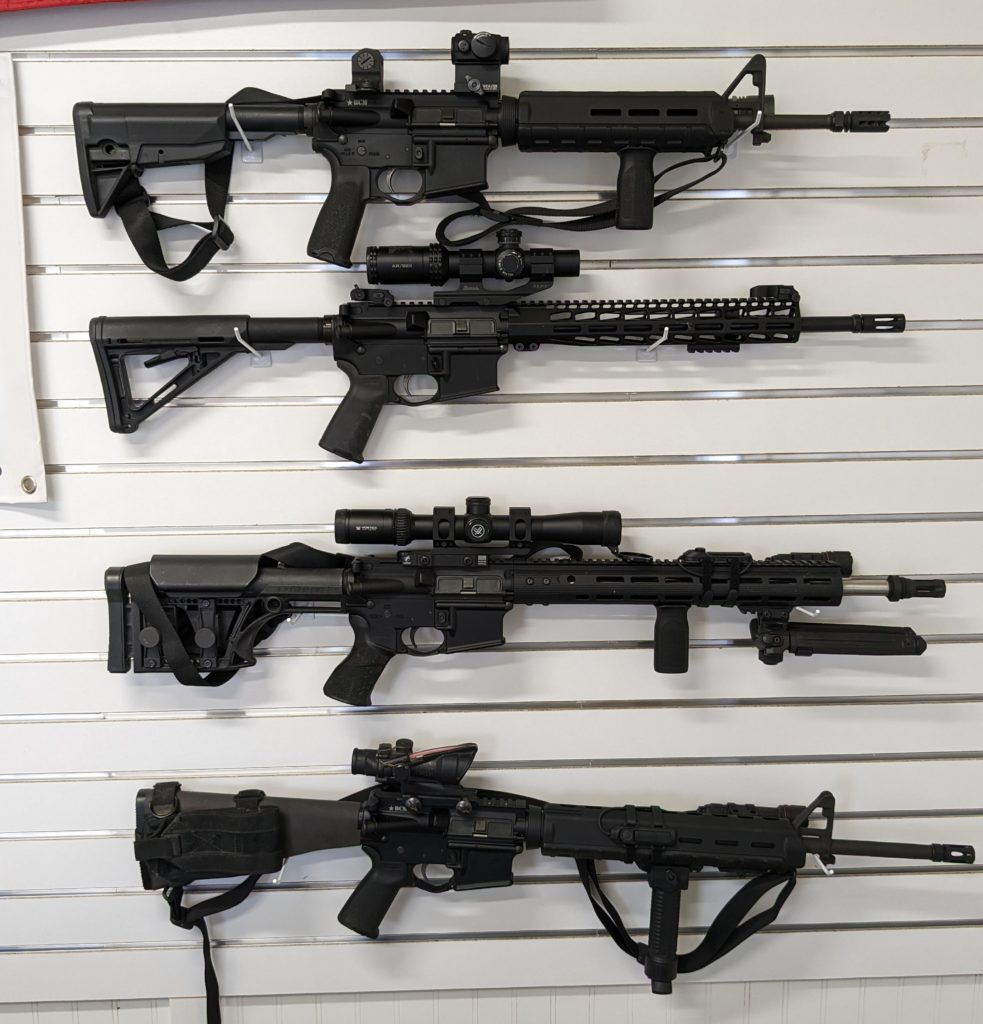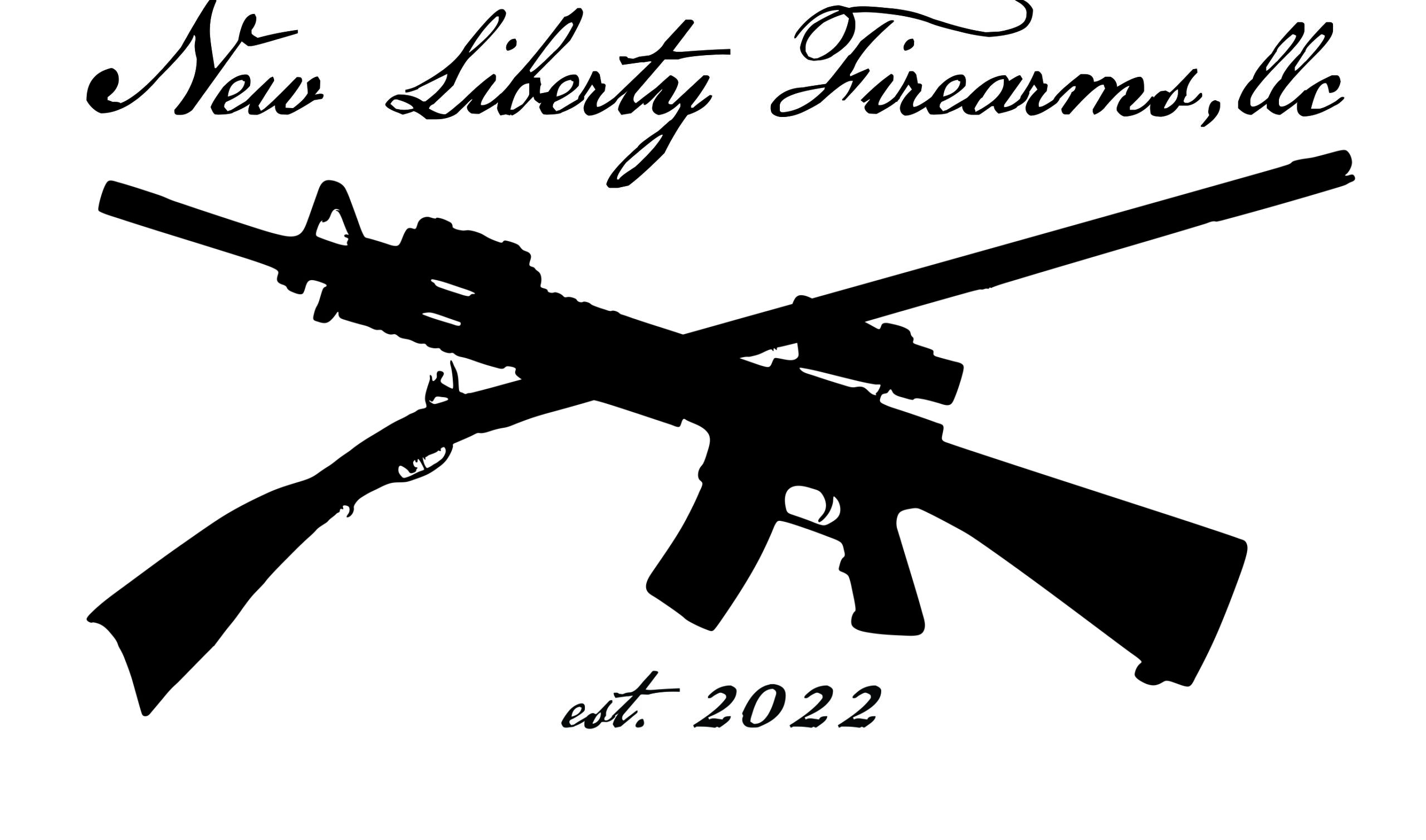The AR family of rifles is among the most popular style of rifles in America today. There are many reasons behind this, they are highly customizable, often lightweight, can be extremely accurate, accessories are plentiful, and they are available in a wide range of calibers, from .22lr to .50 Beowulf and everything in between. You can build an AR style rifle to do just about anything that you might want it to do, and this series of posts will explore what some of the decisions you need to consider to get the right AR for you.
We often have customers say that they want an AR, or want us to build them an AR. When we get this question, one of the first things we will ask is: “What purpose do you want the AR for?” ARs can be built for a very wide range of applications, even within the same caliber. All four of the AR-15 rifles in the pictures below are chambered in 5.56 NATO, but each one is built for a different purpose. There are some tasks that a certain rifle below would be much better at than other ones.

So, a good starting point for deciding on what traits an AR is going to have is deciding what sort of tasks the firearm is going to be used for. Is the AR going to be a range toy? Or a bedside home defense gun? A long range varmint gun or designated marksman (DM) style build? Is it mean to be a clone of a military rifle that the owner was issued? Is it going to be a patrol rifle for a law enforcement officer? Or a competition rifle for 3-gun matches? Does the owner want an AR that is a jack-of all trades master of none sort of rifle? The picture above contains 5.56 rifles that could fit into a number of those categories. Defining the types of targets that are expected to be engaged, and the ranges or engagement that are expected.
Once you start defining the engagement envelope, you can start to narrow down traits that you want the AR to have. Choices can start to be made about the following topics, which we will explore in further posts:
- Caliber choices
- Barrel and gas system length, contour, and twist rate
- Controls selection (trigger, magazine release, safety style)
- Optics selection
- Other accessory selection (sights, handguards, buttstocks, etc…)
In our experience with firearms, we have purpose built a number of ARs, tailoring each one to the specific needs and tasks at hand. As we continue in this series of blog posts, we will highlight some of the individual builds, and explaining the decision making process for those builds. If you are considering buying or building an AR, feel free to reach out to us, and we will be glad to have a discussion to help drive your decision making process. Our belief is you should get a rifle set up to meet your needs from the beginning, instead of buying a rifle that will look completely different by the time it suits your needs. This prevents you, the customer, from buying the same components multiple times, and acquiring a pile of parts that you aren’t using any more.

Trackbacks/Pingbacks